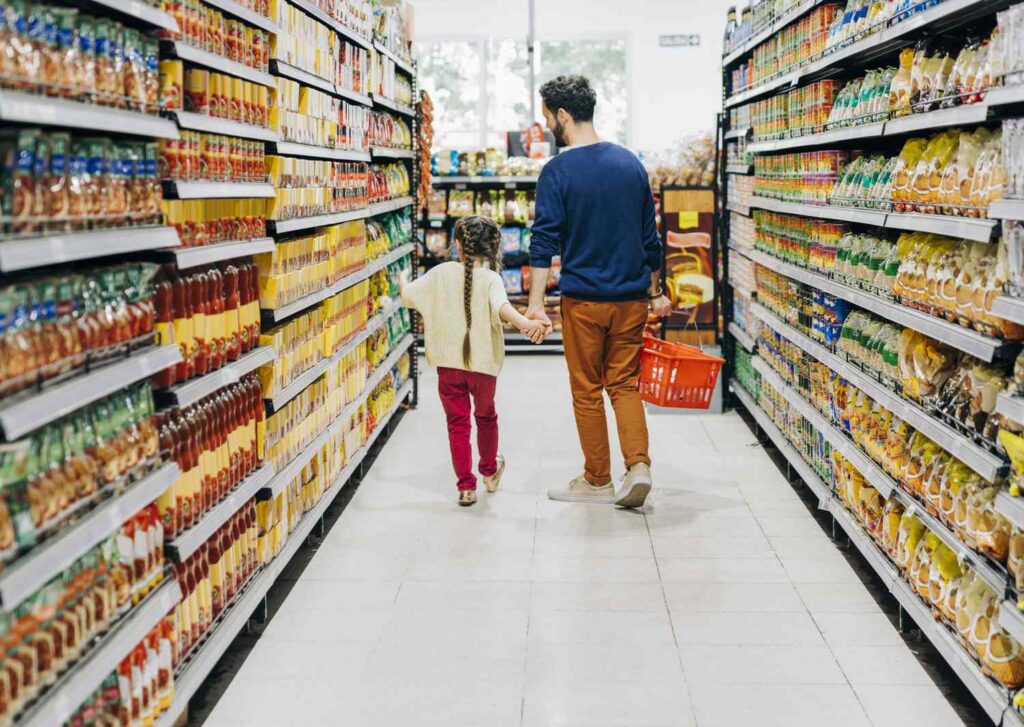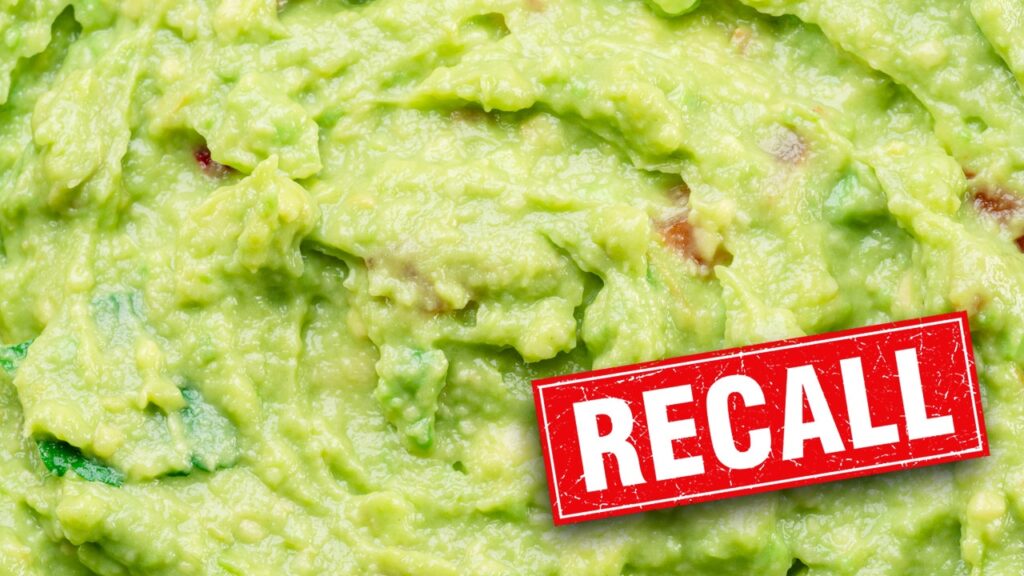:max_bytes(150000):strip_icc():format(jpeg)/GettyImages-1341375961-2375cadce92f40a2ab09e30ed5e1d650.jpg)
Food insecurity is considered an economic and social issue but generally not one that affects the stock market. Its ramifications nonetheless involve the food, retail, and consumer goods sectors and it can be a symptom of broader economic problems including poverty, unemployment, and inflation.
The struggle of households to put food on the table can also indirectly influence stock valuations and investment returns. The tendrils of food insecurity effectively stretch into the core mechanisms of the stock market, affecting consumer behavior, corporate earnings, and even investor sentiment.
Key Takeaways
- Food insecurity is a lack of access to affordable food.
- It’s an ongoing problem in the developed and developing world including more than 10% of American households.
- Food insecurity can affect consumer spending which can in turn dampen corporate earnings and stock valuations.
- Socially responsible investing can offer a pathway for investors to help combat food insecurity while achieving financial returns.
- Food insecurity disproportionately impacts lower-income and minority households so investors can’t solve the problem alone.
What Is Food Insecurity?
Food insecurity is a lack of reliable access to affordable food. It’s a complex condition that involves economic, social, and geographic factors. A household is facing food insecurity if it’s uncertain about where its next meal will come from or has to choose between food and other basic needs like healthcare or housing.
It begins at the household level where the struggle to afford food frequently leads to reduced spending in other areas. Families often cut expenditures in other sectors such as retail, entertainment, and healthcare when they cut back on food spending.
This decline in consumer spending has a cascading effect on businesses. Companies that rely on consumer demand can see revenues drop, resulting in lower profit margins. These diminished earnings can negatively influence their stock prices.
Areas referred to as “food deserts” have limited access to affordable and nutritious food, making it harder for residents to maintain a healthy diet. Some counties in the U.S. don’t have a single grocery store, mainly in the Great Plains and Midwest regions.
Food insecurity in the U.S. increased from 12.8% of households in 2022 to 13.5% in 2023 and 8.4% or 11.2 million households had low food security at that time, according to government statistics.
How Food Insecurity Affects the Stock Market
Food insecurity can set off a chain reaction that eventually reaches the stock market. The stocks of companies in certain sectors are more exposed to the consequences than others, however.
Companies in the food and beverage industry may experience decreased sales as consumers turn to cheaper options or no options at all. Retailers, particularly those selling nonessential items, can experience a slump in demand. Even the healthcare sector can be impacted as food-insecure individuals delay or forgo medical treatments because of financial constraints, affecting the revenue streams of healthcare companies.
Food insecurity can also influence investor sentiment. Rising levels of food insecurity can indicate economic instability, making investors more cautious. This might be seen in reduced investments in stocks that are considered to be riskier, contributing to market volatility.
The Effect of Other Factors
Consumer spending isn’t the only factor that affects corporate earnings and stock valuations. The relationship between food insecurity, corporate earnings, and stock valuations is neither straightforward nor deterministic.
Other factors such as supply shocks, technological innovations, competition, regulations, taxes, interest rates, exchange rates, or geopolitical events can significantly affect the profitability and attractiveness of varying businesses and industries.
What Food Insecurity Means for Investors
Investors traditionally look at indicators like price-to-earnings (P/E) ratios, dividend yields, and earnings reports to assess the health and potential profitability of stocks. These remain important but incorporating food insecurity data can add another layer to risk evaluation.
Understanding that certain sectors like food and retail are more sensitive to fluctuations in food insecurity levels allows investors to weigh their portfolios accordingly. Stocks in these sectors might become riskier when and if food insecurity rises. Food insecurity can vary significantly by region as well. Investing in companies with heavy exposure to areas with high levels of food insecurity might also be seen as a higher risk.
Food insecurity frequently correlates with broader economic conditions. High levels of food insecurity could be an early warning sign of a looming recession. Investors can be better equipped to navigate market downturns or capitalize on emerging opportunities when they keep an eye on this metric.
Donating a part of your gains to socially responsible investments such as nonprofit organizations working to combat food security can provide help as well as tax advantages. Charitable donations are tax-deductible in many jurisdictions and at the federal level and this can help offset some of the capital gains tax you might otherwise owe on your investments.
Fighting Food Insecurity
Governments worldwide use various strategies to combat food insecurity, each tailored to their respective nations’ distinctive challenges and resources. Their methods can be different but the goals are generally the same: to ensure that all citizens have reliable access to sufficient, healthy food.
This includes setting up and supporting direct food programs like food banks and food vouchers such as the Supplemental Nutrition Assistance Program (SNAP) in the United States. Providing free or subsidized meals in schools is another way to directly alleviate food insecurity among children and, by extension, their families.
Investors can have a role in the fight against food insecurity. Not only do they frequently have the financial resources to make a difference but they can also influence corporate behavior and public policy.
Investors can try to influence change by consciously choosing to invest in companies that are committed to reducing food insecurity. Look for companies with clearly defined corporate social responsibility (CSR) programs to reduce food insecurity or related issues like poverty. This could range from food companies sourcing their products sustainably to technology companies that develop platforms that help redistribute excess food.
Companies that report their social impact metrics transparently can help you see what they’re doing. Investing in companies with strong social initiatives isn’t just about doing good. It can also benefit your portfolio. Research has shown that companies with strong CSR initiatives frequently have a lower cost of capital, lower volatility, and higher profitability.
Food Deserts in the U.S.
How Does Food Insecurity Impact the Economy?
Food insecurity reduces consumer spending among those who are struggling and this can contribute to lower economic growth. The public costs of addressing health and educational disparities caused by food insecurity can also weigh on the economy to a certain degree.
Where Does Food Insecurity Have the Greatest Impact?
Food insecurity has the most significant impact in low-income communities and countries with high poverty rates. These areas are frequently ensnared in a cycle of poverty and food insecurity that hampers economic development.
Countries that were facing critical levels of food insecurity in 2022 include Afghanistan, the Central African Republic, the Democratic Republic of the Congo, Ethiopia, Haiti, Honduras, Somalia, South Sudan, Sudan, Syria, and Yemen.
How Can Food Insecurity Impact the Workforce?
Food insecurity can lead to health problems and decreased productivity among workers, affecting individual lives and overall economic output. Employees are more likely to miss work or perform at suboptimal levels, leading to decreased productivity, when they face health issues because of inadequate nutrition.
Why Is Food Insecurity a Problem in the U.S.?
The U.S. grapples with food insecurity despite being a wealthy nation because of income and wealth disparities, structural inequalities, and inadequate social safety nets. Official statistics reported that more than 27% of American households faced some degree of food insecurity during 2023. It affected 36 million households.
What Has the U.S. Done About Food Insecurity?
The U.S. government has taken steps to better address food insecurity, particularly during the COVID-19 pandemic. It provided stimulus packages, extensions of unemployment benefits, and expansions of food assistance programs. These were mostly short-term solutions, however. They weren’t meant to address the systemic issues that lead to food insecurity.
Programs like SNAP exist but they often provide insufficient support to completely alleviate food insecurity.
The Bottom Line
Food insecurity is a problem affecting millions of Americans and many millions more around the world. This lack of access or affordability to food isn’t an isolated problem. It has far-reaching implications that may include influencing the stock market. Understanding this connection can help investors make more informed decisions and potentially contribute to solutions that alleviate this pressing issue.



